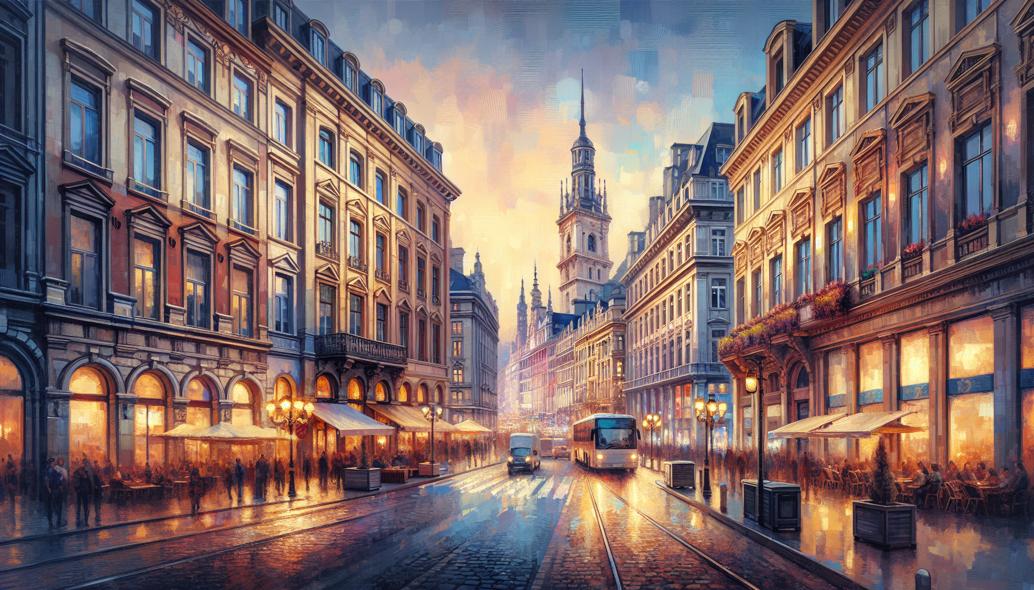How to Paint Light Effects and Shadows in Urban Scenes
Dive into the magic of urban painting by mastering light and shadow! Discover techniques to transform cityscapes into vibrant, lifelike masterpieces. Click to unveil the secrets of capturing urban charm on canvas.

Mastering Light and Shadow in Urban Painting
Urban painting has long been a favorite genre for artists aiming to capture the vibrancy and dynamism of city life. At the heart of successful urban art lies a profound understanding of two fundamental concepts: light effects and shadows. In this blog post, we will explore practical techniques and expert insights to effectively incorporate these elements into your work, especially when you’re working with city scenes in oil. By the end, you will have a solid grasp on how to enhance realism in urban art.
Understanding how to paint light effects and shadows goes beyond simply observing your surroundings. It involves a mastery of technique, an eye for subtlety, and the ability to convey emotion through contrast and color. This guide will walk you through the intricacies of using oil paints to bring these everyday urban landscapes to life with depth and dimension.
Establishing the Basis: Light and Shadow in Urban Environments
Every bustling metropolis offers a complex play of shadows in art, cast by towering skyscrapers, bustling cafe fronts, and intricate street vistas. These shadows, along with the light effects created by the sun, street lamps, and various reflections, become integral elements of a city's story and mood in your painting.
To begin, immerse yourself in the study of how light affects daily scenarios in urban settings. Observe the harsh, elongated shadows of early morning, the diffused and subtle gradations of an overcast afternoon, and the dramatic contrasts deepening as night draws in. This keen eye for detail will inform your palette and brushwork, enhancing the realism in urban art.
Composition: Framing Your Urban Scene
When designing your composition, pay close attention to how light and shadows guide the viewer's eye through the painting. The balance of dark and light forms should not just delineate objects but should lead to focal points that form your painting’s narrative.
Leverage lines formed by buildings, roads, and pedestrian paths to guide viewers. Use techniques such as the rule of thirds or the golden ratio to find visually pleasing arrangements that maximize the transformative power of light and shadow interplay. Mapping out your composition can also help to delineate between foreground, midground, and background elements, providing further depth.
Crafting Light Effects in City Scenes in Oil
Oil paints are prized for their rich texture and luminosity, making them ideal for rendering city scenes. Utilize a smooth canvas finish to allow for blending that replicates soft light effects. Layer thicker applications for highlights and impasto where you want to capture the gritty texture of urban infrastructure.

Experiment with glazing techniques, employing translucent layers over dry areas to subtly shift tones and enhance the effect of lighting. Use vibrant yellows and oranges to capture the warmth of sunlight, while blues and purples can add the chill of shade or twilight gloom.
The Art of Casting Shadows
Painting realistic shadows is quintessential for adding depth and grounding objects in your urban scene. Pay attention to the temperature of shadows – often cooler than their corresponding light sources. However, reflective surfaces can bounce warmth back into shadows, and nearby colored surfaces influence them with tinges of their hue.
To paint shadows effectively, consider their form and nature. Hard-edged shadows, typical of a bright, clear day, contrast sharply with the soft-edged shadows on overcast days. Use a dry brush or stippling technique to diffuse the edges of shadows for a softer effect.
Color and Contrast for Realism in Urban Art
The choice of colors plays a substantial role in defining the mood and realism of your city scenes in oil. Bright, saturated colors evoke an energetic bustling city, while muted tones suggest tranquility or melancholy. High contrast typically injects vibrancy, while subdued contrast can suggest fog, dusk, or atmospheric pollution.
Consider complementary colors for vibrancy. For example, a warm, orange street lamp against a cool, bluish night sky creates a vivid contrast that draws focus and invites the viewer into the scene.
Advanced Techniques and Tips
For artists looking to advance their urban painting skills with light effects and shadows, consider these expert tips:
- Atmospheric Perspective: Use lighter, cooler colors for distant objects to give a sense of space. Far-off buildings can appear less defined, with more blue hues as they recede from view.
- Texture and Detail: Incorporate varied textures for realism. The gritty texture of concrete juxtaposed with the sleek shine of glass offers a tactile quality to urban paintings.
- Capturing Motion: In urban scenes, life abounds, whether pedestrians or vehicles. Blurring techniques can suggest swift movement, while subtle repetition of forms can depict ongoing, bustling activity.
Conclusion: Merging Technique with Passion
Mastering light effects and shadows in urban painting is about both precision and intuition. It involves a careful study of real-world observations and applying them with creative flair to depict city life in all its complexity and beauty. With the right techniques and a deep understanding of your subject, you can transform simple urban scenes into captivating narratives on canvas.
By thoughtfully integrating shadows in art and exploring the fullest potential of city scenes in oil, your artworks will resonate with authenticity and emotion. Let your artistic journey through the urban landscape inspire viewers to see the beauty and intricacy of the environments they inhabit daily.
